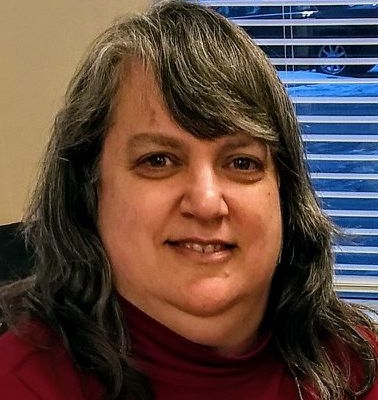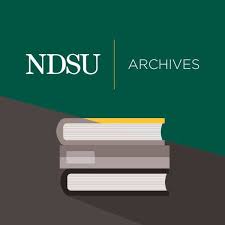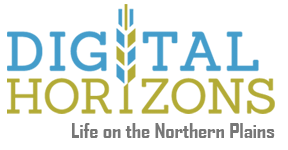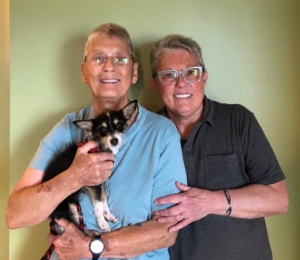 “I’m really glad you’re taking this project on. One day it’s going to be a great testament . . . to the gay and lesbian community. I think you have so many people, and I sure hope that some of the other ones that we’ve mentioned decide to add their color to it, because it’s going to add a great amount of depth to it as well.”
“I’m really glad you’re taking this project on. One day it’s going to be a great testament . . . to the gay and lesbian community. I think you have so many people, and I sure hope that some of the other ones that we’ve mentioned decide to add their color to it, because it’s going to add a great amount of depth to it as well.”
– Vickie Paxton
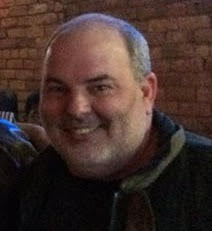 “I wish more people could be interviewed because there are many, many, many people who have stories to tell. I wish more people felt comfortable being interviewed and sharing those stories. I think by sharing the stories that’s the only way we are going to move forward – the only way.”
“I wish more people could be interviewed because there are many, many, many people who have stories to tell. I wish more people felt comfortable being interviewed and sharing those stories. I think by sharing the stories that’s the only way we are going to move forward – the only way.”
– Gerry Even
Our oral history project is a wonderful opportunity to create a permanent record for future generations about the experiences of LGBTQ individuals who have grown up in or who have lived in North Dakota and northwestern Minnesota. We are part of the “pioneer generation” who blazed new paths, broke new ground, wrote new rules, and provided new models. Our stories often paint a picture of past struggles, disconnection from family, distancing from friends and loss of jobs after coming out of the closet. Some have felt the pressure to have a heterosexual marriage or to move to larger and more accepting cities. Many have also found acceptance and have championed the cause for equality in large and small ways.
WOULD YOU LIKE TO ADD YOUR STORY…
… to the collective narrative of close to 200 other LGBTQ “pioneers” and allies in our region? We look to interview:
- 2SLGBTQIA+ individuals, couples, or allies;
- those who are 50+ years of age or whose stories are at risk of being lost;
- those who were born, have lived and/or currently live in North Dakota, northwestern Minnesota or the border areas of this region.
ALL of our stories are important and need to be remembered.
Too many stories have already been lost.
This is our legacy and gift to future generations.
Why Should I Tell My Story?
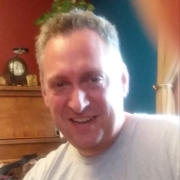
“We have to remember where we came from. We have to remember the people who were heroic, who really stuck their neck out, in some cases put their life on the line….I think we need to remember and we need to respect those who’ve been through a lot, because we kind of take this all for granted now….and it hasn’t been that long.”
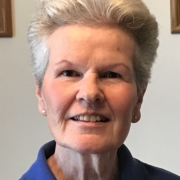
“My hope is that by doing something like this, if I can bring some hope, maybe a little bit of education, certainly perspective from where we were forty, fifty years ago to where we are today and help even just one person be more loving and accepting of themselves, or some person maybe who’s not gay listening to this who can learn to be more loving and accepting of a gay family member or a companion or friend, you know, it’s worth it. And we change the world in small ways and in small steps, and this project and these interviews I think are a part of that changing the world in small ways and small steps. And I’m delighted to be a part of that, so thank you.”
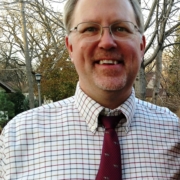
‘Well, I’m so thrilled to have this opportunity because as a young person, it was hearing other people’s stories is what helped me to identify and live my own story…. And so knowing the importance of the impact of our individual stories and how important they can be to people now, as well as generations to come, I thought it was important to be a part of this oral history project.”
But I haven’t done anything significant…
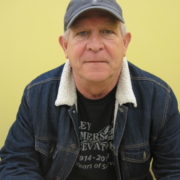
“Thank you for doing this…I hope that by more people telling their story, and maybe…just so people can know that they’re accepted. It just…it makes me sick when I see some of these suicides and people threatening that just because they’re different.”
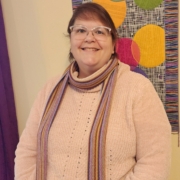
“You know, when [the project] first approached me about this, my first thought was, ‘What do I have to add to this conversation?’ Right? I think that this work is remarkably important, particularly in this climate where there are fewer LGBTQ people…because it is dangerous to live here. LGBTQ North Dakotans aren’t on an island by themselves. That’s not the whole state against LGBTQ folk… And, you know, this small minority has just done a really good job of getting themselves into positions where their voices can prevail.”
What is it like to be interviewed for this project?
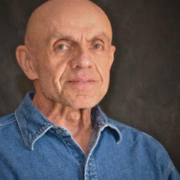
“[I was] sitting in my home and opening up completely about who I was, how this had happened, or how I had come to be; how I’d been in denial for so long. I just wanted to open people’s eyes. I wasn’t ashamed of myself any longer. I was proud of who I was. I was stronger. I was a person who finally was fighting back. I was finished being bullied anymore. No one was going to hurt me again if I had anything to do with it.”
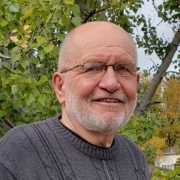
“All I want to say is I’m glad I did this interview. I don’t know if it was as complete as maybe it could have been, but it’s kind of…as you get to that latter part of your life and you’re going through the numbers of what should I do, I think this part of doing that completion. And it’s very good. I mean, I have the feeling that by doing this, that when my life ends, I will have been able to have made a statement on my life, and it’s been a good life.”
Will I be safe if I share my story?
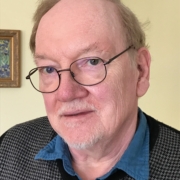
“I think people often have the experience that when they were open to other people in their family or friends, that the people in general were very accepting, and maybe felt critical of, well, “Why didn’t you tell me sooner,” or “well, I know that already.” So, I mean, I believe that there’s a basic goodness in most people, and I think that has been a problem with the closet, because when you are not open with other people and they don’t really know you, you’re limiting that relationship.”
HOW DO I TELL MY STORY?
Steps to take:
- Contact the Project Coordinator to let them know if you need more information and if you have a preference for an interviewer.
- If you wish, choose an Interviewer (links to a subpage with photographs and short bios of interviewers).
- Set up a time and location with your interviewer for the interview.
- Complete the Personal Biographical Form.
- Gather Documents (photographs, letters, journals, diplomas, etc.) that help you remember important events you wish to include in your story.
- Choose the Legal Release form option that best fits how public you want your story to be and then complete and sign it.
If you have any questions about any of these steps or the legal release forms, you are welcome to contact your interviewer or the Project Coordinator.
What Happens after the Interview?
After an interview has been completed, your interview will be transcribed following the standards established by the Minnesota Historical Society. The transcription will be sent to your interviewer to review for accuracy and clarification of any points where the transcriber had questions about the recording.
In 3-4 months following your interview, the Project Coordinator will forward the transcript to you for your review. This is the opportunity for you to make minor corrections to the transcript, such as correcting dates, misremembered items, correcting spellings or providing brief elaborations that will be included in endnotes. Because the transcript is the printed record of the recording, we ask that you make only minor changes to the transcript.
When you have finished your review and notified the Project Coordinator of any corrections request, the transcription is completed. We will also request any additional materials that you wish to include in your archive folder that were not provided at the time of the interview to be supplied at this time.
The Oral History Committee will deliver all materials to the NDSU Archives. While materials can always be added at a later date, it is optimal for the NDSU Archives to receive as complete a file as possible.
The NDSU Archives staff will add your file to the “Breaking Barriers” permanent collection and, depending upon your instructions, upload the audio file, transcript and other materials to the online collection at Digital Horizons. We will notify you when this process has been completed.

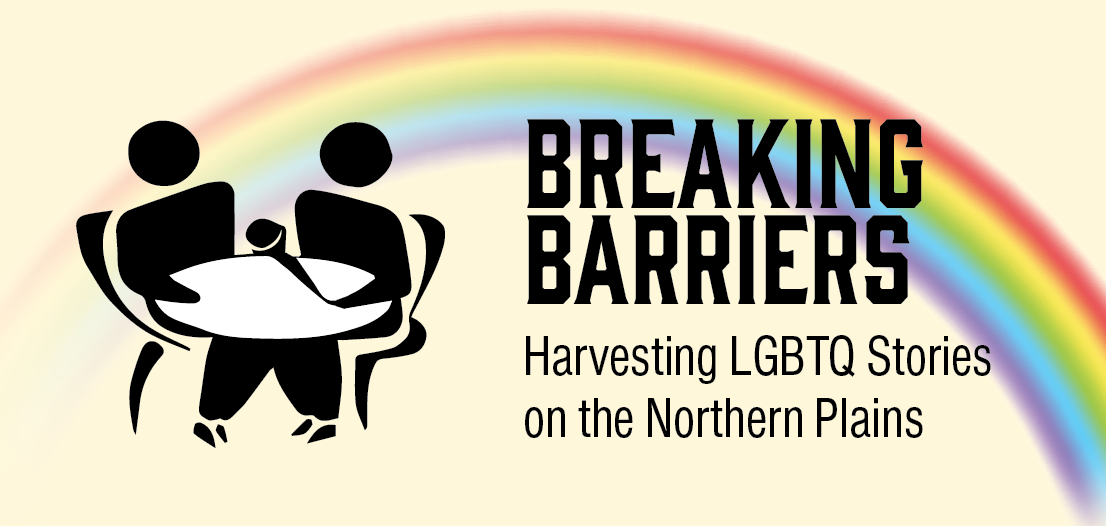
![Larry & Jan Interview[13828]](https://www.rainbowseniorsoralhistory.org/wp-content/uploads/sites/40/2024/04/Larry-Jan-Interview13828-1500x787.jpg)
